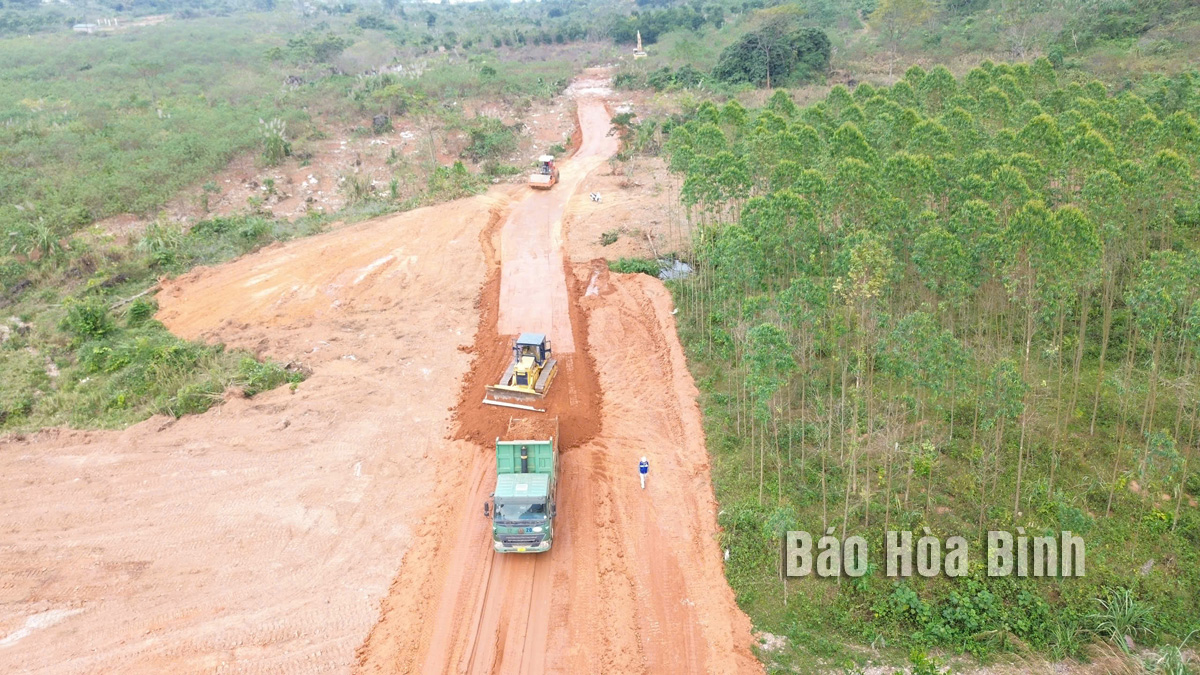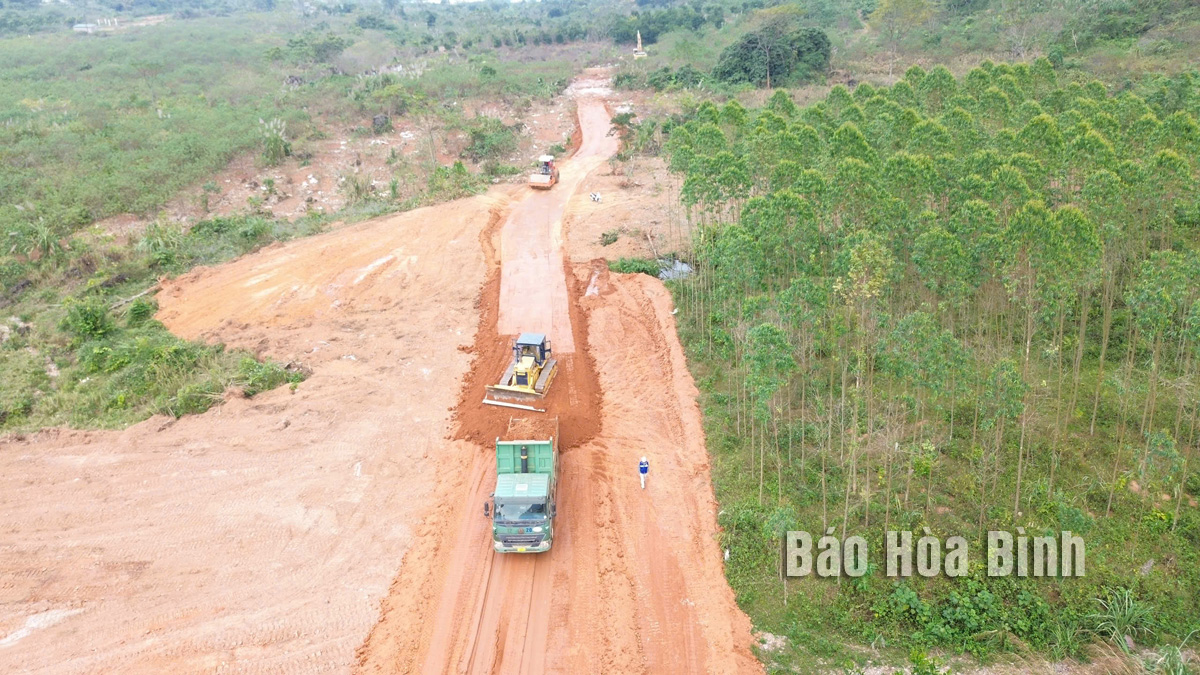
Da Bac district is striving to complete land clearance for the Hoa Binh - Moc Chau expressway project in the first quarter of next year. As of the end of November, the district handed over land for just 3 km of the road, from km 24+500 to km 27+500 in Cao Son commune.
A construction site on the Hoa Binh-Moc Chau expressway in Cao Son commune, Da Bac district.
The expressway spans 34 km in total, with an investment of 9.9 trillion VND (390 million USD). A 21-km part of the route runs through Da Bac district, prompting the need to relocate 88 households in the communes of Cao Son, Tien Phong, Tu Ly, and Da Bac town. Effective communication efforts have persuaded local residents to support the project.
Nguyen Thi Hiem, a resident of Seo village, Cao Son commune, said that local residents are very excited that the expressway will pass through the area. Her family is among those having to move to make way for the road, she said, adding that they have already received compensation and handed over the land to the construction unit.
All 100 affected households have agreed with the compensation plans. So far, only four households have not relocated due to problems relating to administrative procedures rather than disagreement with the project.
In Cao Son commune, the construction of the expressway impacts four villages - Seo, Na Chieu, Tam, and Lanh - with over 300 households and more than 1,000 land plots affected.
Across the entire route, there are 2,236 plots of land to be taken for the expressway's construction, including 888 plots in Da Bac Town (5 km), 1,125 in Cao Son (10.5 km), 20 in Tu Ly (0.2 km), and 223 in Tien Phong (6 km).
By the end of November, the district had completed land measuring and property evaluation along the main route, with 60 households to be resettled.
The project management board has prepared a compensation plan for assets on the land for the entire route, with a total budget of approximately 30 billion VND.
According to data from the Hoa Binh Provincial Party Committee, the industrial production index for the first six months of 2025 is estimated to have increased by 20% compared to the same period last year. This marks the highest year-on-year growth rate for this period since 2020.
In the first six months of 2025, Hoa Binh province’s export turnover was estimated at 1.145 billion USD, marking an 18.11% increase compared to the same period in 2024. Import turnover was estimated at $ 804 million, a 17.15% increase, which helped the province maintain a positive trade balance.
The lives of the ethnic minority farmers in Tan Lac district have gradually improved thanks to the new directions in agricultural production. This is a testament to the collective strength fostered through the professional associations and groups implemented by various levels of the district’s Farmers’ Union.
With the motto the "product quality comes first,” after nearly one year of establishment and operation, Muong village’s Clean Food Agricultural and Commercial Cooperative, located in Cau Hamlet, Hung Son Commune (Kim Boi district), has launched reputable, high-quality agricultural products to the market that are well-received by consumers. The products such as Muong village’s pork sausage, salt-cured chicken, and salt-cured pork hocks have gradually carved out a place in the market and they are on the path to obtaining the OCOP certification.
In the past, the phrase "bumper harvest, rock-bottom prices" was a familiar refrain for Vietnamese farmers engaged in fragmented, small-scale agriculture. But today, a new spirit is emerging across rural areas of Hoa Binh province - one of collaboration, organisation, and collective economic models that provide a stable foundation for production.
Maintaining growing area codes and packing facility codes in accordance with regulations is a mandatory requirement for agricultural products to be eligible for export. Recently, the Department of Agriculture and Environment of Hoa Binh province has intensified technical supervision of designated farming areas and packing facilities to safeguard the "green passport" that enables its products to access international markets.



